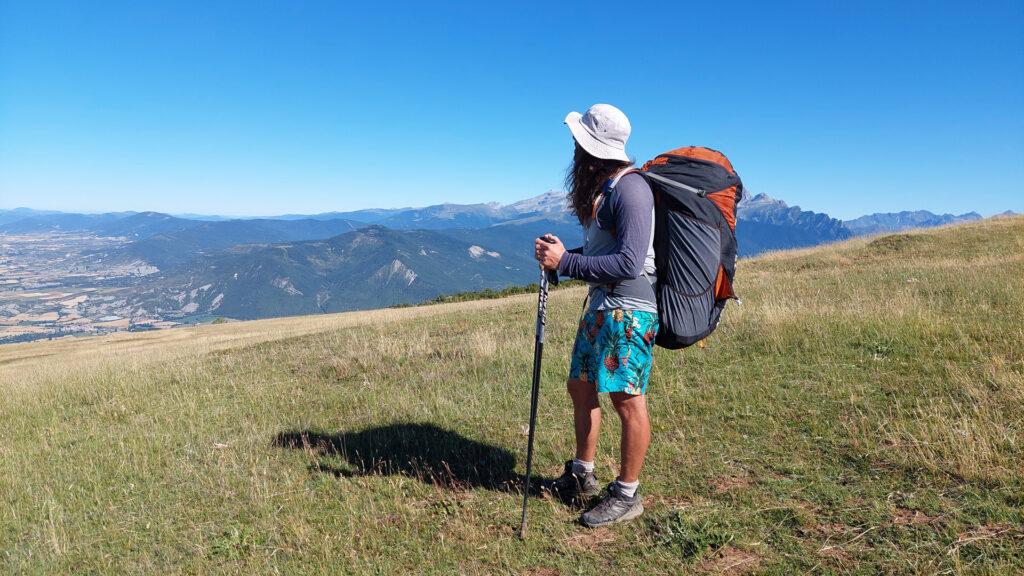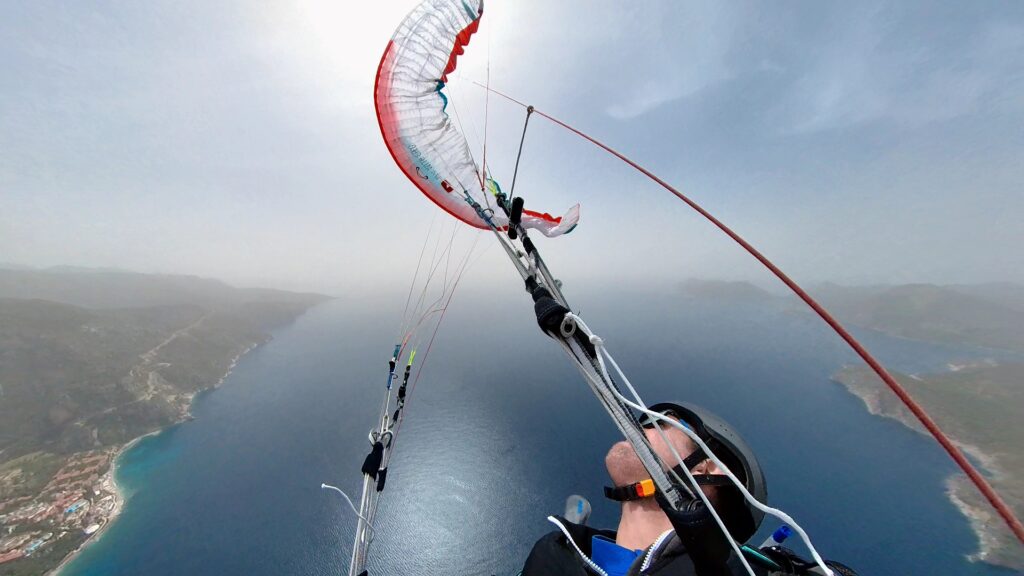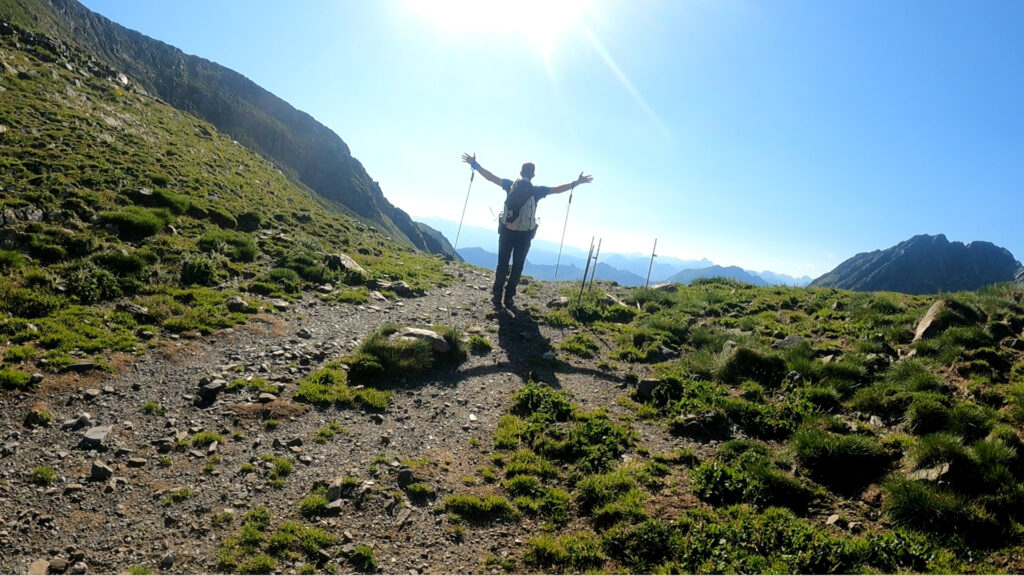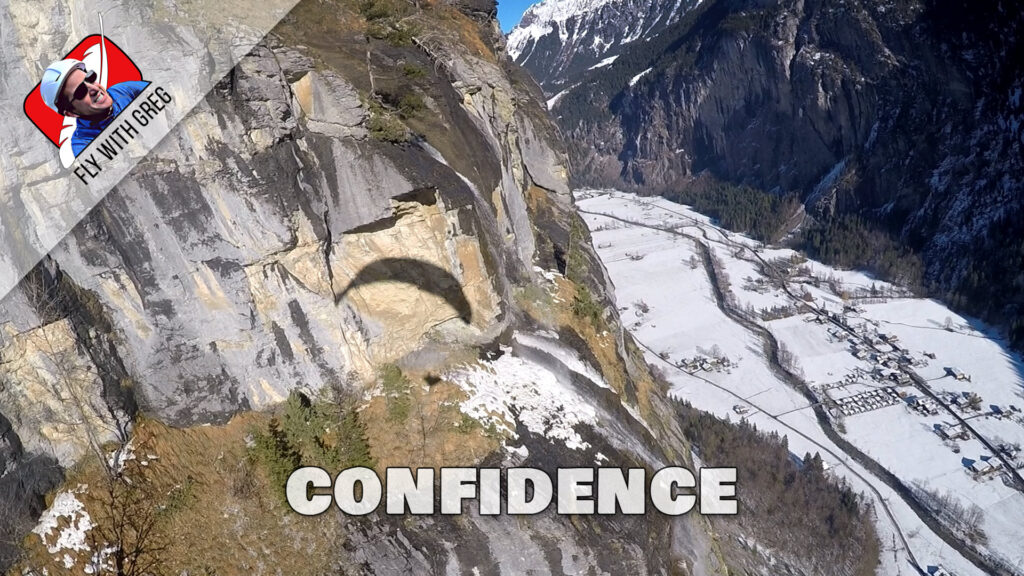Fear can leech the enjoyment out of the sport. It’s usually why people give up paragliding. You might think of other reasons. You’ll rationalize it. But deep down it’s the fear that’s driving you away from something you once loved. Sometimes, we all get scared.
It’s a basic fear: falling, and being broken on something. If we didn’t have this fear, we wouldn’t survive long in this world. So how do we cope with this fear, and still enjoy the sport?
You could try to ignore it. ‘Be tough, be strong’ … as if thinking that you are capable of anything will give you some protection. Be careful of this, it’s just a kind of ignorance that leads to an accident statistic.
Rather try a structured approach to resolve the fear.
STEP 1: acknowledge the fear. It’s difficult to be self-analytical but if you can recognise that you’re scared, you have a chance to find solutions. Take a moment before every flight to consider your mental state and be honest with yourself.

A pilot takes a long moment before flying a new site in midsummer in the Spanish Pyrenees.
STEP 2: identify the source of fear. Look for the most immediate threat; try to find your key hazard, like “I’m scared about a big collapse straight after launch. I’ve seen somebody crashing like that.” That’s a specific situation you can prepare for.
STEP 3: understand the danger. If you’re flying and the air gets weird and you just don’t know why, that’s going to make you scared. Afterwards, you need to work on understanding what happened. Right away, look at weather forecasts for that valley, for that time of day (while the forecasts are still online), and try and analyse all the different elements that could have caused the turbulence. Talk to local pilots about it. Perhaps you had an SIV situation in that air – your glider did something that you didn’t understand – in which case you need to ask an instructor for some advice. If your wing behaved strangely, get a service to check that the lines are not out of the trim. By taking these actions you are developing your understanding of that thing that scared you.

The wind on the lake indicates turbulence. It is obvious when you understand windflow over terrain.
STEP 4: take action. Begin with the fear that scares you the most: acknowledge it, identify it, and understand it. Now you can define exactly what you need to do. Maybe you identified that dangerous area of ‘weird air’, and after discussing it with local pilots you understand where it’s going to be, what time of day, all the factors that influence it. You can apply that understanding to different flying situations. It will apply in similar terrain, in similar situations. So you can estimate the risk everywhere, using this tool, and you can avoid the thing you feared. It loses its grip on your emotions. You are aware of the danger, but you can navigate around it.

I have a fear of low-level cravattes. So I train to keep the wingtips clear, even in extreme situations.
STEP 5: mastering fear. Now work systematically through all your flying fears (1-4 above) and transform them into risks. This helps you to set the fear aside because risk management is a scientific process. Rising above your fears and choosing the safest path is a key skill to develop as a pilot.

The physical preparation for the X-Pyr race provided the foundation for mental strength.
How to build more resistance to fear
Regular exercise is probably the best way to prepare for flying anxiety. Make yourself strong: whatever works for you, whether it’s hiking, climbing, cycling or swimming. Paragliding, by itself, doesn’t give you enough exercise. Let’s be honest, you float in a chair for hours and just use mental power, so most of us need to do something more physically demanding. Think of it as cross training. Being healthy and strong can help you tolerate danger, so you can enjoy the exposure to the elements and focus on the solutions.
I hope this framework helps you master your fears and enjoy your flying!

GO FURTHER
Confidence comes from complete knowledge. When you have a foundation of solid flight principles and you build a strong layer of wing control upon it and combine that with good safety procedures and reinforce it by watching the right kind of demonstrations and get clarity by asking questions and getting clear explanations, it makes you begin to feel unshakeable in the air. To get to the next level, join the Flight Academy.

